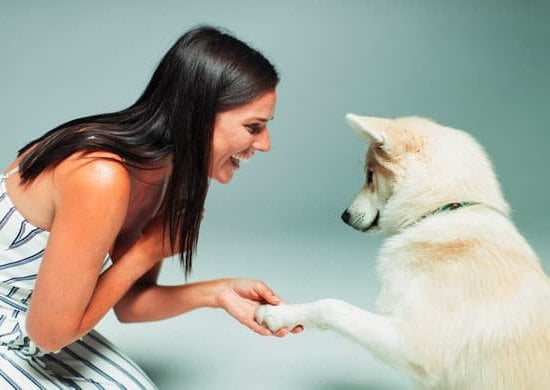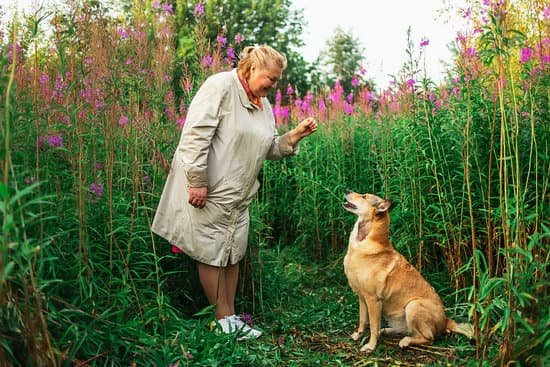Training your dog to walk on a leash is an essential skill for both the pet and the owner. Understanding how to train a dog to walk on a leash is vital for their safety and the well-being of others. In this article, we will explore the importance of leash training, as well as provide tips and techniques for successful training.
Leash training allows you to have better control over your dog in public spaces, preventing them from running off or getting into dangerous situations. It also promotes good behavior and socialization, making it easier for you to take your furry companion on walks and outings. By understanding your dog’s behavior and body language, you can tailor the training process to suit their individual needs and personality.
Choosing the right leash and collar for your dog is crucial for their comfort and safety during walks. Introduction to the leash in a safe and controlled environment will help ease your dog into the concept of walking on a restraint. With positive reinforcement training techniques, patience, and consistency, you can teach your dog to walk calmly and responsively on the leash, setting them up for success in different environments and situations.
Understanding Your Dog’s Behavior and Body Language
When it comes to training your dog to walk on a leash, understanding their behavior and body language is crucial. Dogs communicate through their body language, and being able to interpret their cues will help you establish a strong connection with your furry friend during leash training.
Here are some important behaviors and body language signals to look out for when training your dog to walk on a leash:
1. Tail wagging: A wagging tail can indicate excitement, but it’s essential to pay attention to the speed and position of the wag. A high, fast wag may signal arousal or overstimulation, while a low, slow wag may indicate submission or nervousness.
2. Ears: The position of your dog’s ears can provide insight into their mood. Forward-facing ears typically indicate attentiveness or curiosity, while flattened ears may suggest fear or anxiety.
3. Body posture: A relaxed and loose body posture indicates that your dog is comfortable and at ease. However, stiffness or rigidity in their body could signal stress or discomfort.
By understanding these behavioral cues and body language signals, you can better gauge your dog’s emotional state during leash training and make adjustments as needed to ensure a positive experience for them.
Additionally, it’s important to consider your dog’s breed tendencies and individual personality traits when training them to walk on a leash. Some breeds may have a higher prey drive or be more easily distracted, making leash training techniques vary from one dog to another.
Remember that every dog is unique, so take the time to observe and understand your furry companion so that you can tailor your leash training approach accordingly. With patience and consistency, you’ll be well on your way to successfully teaching your dog how to walk calmly and responsively on a leash.
Choosing the Right Leash and Collar for Your Dog
When it comes to leash training your dog, choosing the right leash and collar is crucial for a successful training experience. The right equipment can make all the difference in your dog’s comfort and safety while on walks. There are various options available, so it’s important to consider your dog’s size, behavior, and walking needs when selecting a leash and collar.
For smaller dogs or those who tend to pull on the leash, a harness may be a better option than a traditional collar. A harness distributes the pressure more evenly across the dog’s body, reducing strain on their neck and preventing them from slipping out of their collar. For larger dogs, especially those prone to pulling or lunging, a no-pull harness with front clip attachment can provide better control and discourage pulling.
When it comes to choosing a leash, consider the material, length, and style that best suits your dog’s needs. Retractable leashes provide flexibility and freedom for your dog to explore during walks, but they may not offer as much control in certain situations.
Standard nylon or leather leashes are durable choices that allow for better control over your dog’s movements. It’s essential to ensure that the leash is the appropriate length for your walking environment and provides enough room for your dog to move comfortably.
Understanding your dog’s specific needs and behavior will help you make an informed decision when selecting the right leash and collar for leash training. By taking into account factors such as size, behavior, and walking habits, you can choose equipment that enhances the training experience for both you and your furry companion. With the right tools in hand, you’ll be better equipped to begin teaching your dog how to walk on a leash calmly and responsively.
Introduction to the Leash in a Safe and Controlled Environment
When it comes to leash training for your dog, it is essential to start with the proper introduction to the leash in a safe and controlled environment. This initial step is crucial as it sets the foundation for successful leash walking in the future. One key tip on how to train a dog to walk on a leash is to make sure that your dog feels comfortable and secure with the leash and understands its purpose.
Before introducing the leash, allow your dog to become familiar with it by letting them sniff and explore it in a calm and relaxed manner. Once your dog seems at ease with the sight and presence of the leash, you can then proceed to attach it to their collar or harness.
It is important to ensure that there is no pressure on the leash at this stage; its purpose at this point is simply for your dog to get accustomed to its presence.
During this phase, use positive reinforcement techniques such as treats and praise to create a positive association between the leash and your dog. For example, you can give your dog treats when they show interest in or approach the leash. This helps them understand that good things happen when they are around the leash, making them more receptive when it comes time for actual training walks.
By taking these initial steps in a safe and controlled environment, you are laying down a solid groundwork for effective leash training. Remember that every dog is different, so be patient and understanding as you guide your furry friend through this process. With consistency and positive reinforcement, your dog will soon be ready for more advanced leash training exercises.
| Introducing Leash | Safe Environment |
|---|---|
| Get Dog Sniff & Explore Leash | Attach Leash without Pressure |
| Positive Reinforcement Techniques | Be Patient & Understanding |
Positive Reinforcement Training Techniques for Leash Walking
Positive reinforcement is a highly effective training technique for teaching your dog to walk on a leash. This method involves rewarding your dog with treats, praise, or toys when they exhibit the desired behavior, such as walking calmly by your side without pulling. By using positive reinforcement, you can create a strong association in your dog’s mind between walking nicely on the leash and receiving something they enjoy.
Using Treats and Rewards
When using positive reinforcement to train your dog to walk on a leash, it’s important to have a supply of high-value treats that your dog loves. As you start walking with your dog on the leash, reward them with a treat every few steps when they are staying close to you and not pulling. This will encourage them to repeat the behavior in the hopes of receiving another treat.
Clicker Training
In addition to using treats, some owners find clicker training to be an effective method for leash training. A clicker is used to make a distinct sound when your dog performs the desired behavior, followed by giving them a treat. Over time, your dog will learn that the sound of the clicker signals that they have done something right and will be rewarded for it.
By consistently using positive reinforcement techniques such as treats, praise, and clicker training, you can effectively teach your dog how to walk calmly on a leash. It’s important to remember that every dog learns at their own pace, so patience and consistency are key when implementing these training methods. With time and dedication, you’ll soon enjoy peaceful walks with your well-trained pup.
Teaching Your Dog to Walk Calmly and Responsively on the Leash
Staying Calm and Patient
One of the most important aspects of teaching your dog to walk calmly on a leash is staying calm and patient yourself. Dogs are incredibly perceptive to their owner’s energy, so if you become frustrated or anxious, your dog will pick up on that and may become more agitated themselves. It’s important to remember that leash training takes time and consistent effort, so it’s essential to remain calm and patient throughout the process.
Using Positive Reinforcement Techniques
Positive reinforcement is a highly effective method for teaching your dog to walk calmly on a leash. When your dog walks beside you without pulling or lunging, be sure to offer praise, treats, or even a favorite toy as a reward. This will help your dog associate walking calmly on the leash with positive experiences and increase the likelihood that they will repeat the behavior in the future.
Setting Realistic Expectations
It’s important to set realistic expectations when training your dog to walk calmly on a leash. Remember that every dog learns at their own pace, so don’t expect instant results. Some dogs may take longer to grasp the concept than others, so be patient and persistent.
Additionally, it’s crucial to understand that even after successful initial training sessions, there may still be moments where your dog becomes excited or distracted during walks. Consistency in training and continued use of positive reinforcement techniques will help reinforce good behavior over time.
By staying calm and patient, using positive reinforcement techniques, and setting realistic expectations, you can effectively teach your dog to walk calmly and responsively on a leash. Remember that every dog is different, so it’s essential to tailor your training approach to suit your individual pet’s needs. With time and dedication, you’ll be able to enjoy peaceful walks with your well-behaved furry companion.
Handling Common Challenges and Misbehaviors During Leash Training
Leash training can present a variety of challenges and misbehaviors that you may encounter while teaching your dog to walk on a leash. Some common issues include pulling, lunging, barking, and distraction. It’s important to address these behaviors early on in the training process to ensure that your dog learns to walk calmly and responsively on the leash.
One common challenge is dealing with a dog that constantly pulls on the leash. To address this behavior, it’s essential to use positive reinforcement techniques such as rewarding your dog for walking calmly by your side. You can also try changing directions when your dog pulls, so they learn that pulling will not get them where they want to go.
Another issue many pet owners face is when their dog becomes reactive while on the leash, such as lunging or barking at other dogs or people. Understanding your dog’s body language and behavior cues can help you anticipate and manage these situations more effectively. It’s crucial to remain calm and composed when handling these behaviors, as a reactive response from you could exacerbate the situation.
Lastly, distractions during walks can be a common challenge during leash training. Dogs may become fixated on other animals, noises, or even smells, leading them to pull or lose focus. Consistency in training and using high-value treats can help redirect your dog’s attention back to you during walks.
| Challenges | Tips for Handling |
|---|---|
| Pulling on the Leash | Use positive reinforcement techniques; change direction when the dog pulls; use no-pull harnesses |
| Reactivity (lunging/barking) | Remain calm; anticipate triggers; desensitize through gradual exposure |
| Distractions | Use high-value treats; practice consistent training; keep walks short at first |
Taking Your Dog for Leash Walks in Different Environments and Situations
When it comes to leash training, it’s important to expose your dog to various environments and situations in order to ensure that they are fully prepared for the outside world. Here are some tips on how to train a dog to walk on a leash in different environments and situations:
1. Start with familiar surroundings: Begin by taking your dog for walks in areas that they are already familiar with, such as your neighborhood or local park. This allows them to become comfortable with walking on the leash before introducing them to new and unfamiliar environments.
2. Gradually introduce new environments: Once your dog is comfortable walking on the leash in familiar surroundings, gradually introduce them to new environments such as busy streets, crowded parks, or quiet hiking trails. Be patient and allow them time to adjust to these new surroundings at their own pace.
3. Practice obedience commands: In different environments, it’s important for your dog to respond to basic obedience commands while on the leash. Practice commands such as “sit,” “stay,” and “heel” in various situations to reinforce their training and ensure that they remain well-behaved no matter where you take them for a walk.
Remember that every dog is unique and may require different amounts of time and practice when it comes to walking on a leash in various environments. By being patient and consistent with their training, you can help your dog become confident and well-behaved when out for a walk, no matter where you may be.
Consistency and Patience
In conclusion, successful leash training for your dog requires consistency and patience. It is essential to understand that leash training takes time and effort, and every dog learns at their own pace. By consistently practicing the training techniques and being patient with your furry friend, you can achieve positive results in leash walking.
It’s important to remember that understanding your dog’s behavior and body language is crucial in leash training. By recognizing signs of stress or discomfort, you can adjust your training approach to ensure a positive experience for your pet. Additionally, choosing the right leash and collar for your dog’s size and breed is essential for their comfort and safety during walks.
Positive reinforcement is key when teaching your dog to walk calmly and responsively on a leash. Rewarding good behavior with treats, praise, or playtime will encourage them to continue exhibiting the desired behavior. Handling common challenges and misbehaviors with patience and consistency will also contribute to successful leash training.
Incorporating variety in your dog’s walking environment will help them generalize their leash training skills. Taking them for walks in different environments and situations will reinforce their training and build their confidence on the leash. Through dedication, consistency, and patience, you can effectively train your dog to walk on a leash with obedience and joy.

Welcome to the blog! I am a professional dog trainer and have been working with dogs for many years. In this blog, I will be discussing various topics related to dog training, including tips, tricks, and advice. I hope you find this information helpful and informative. Thanks for reading!





